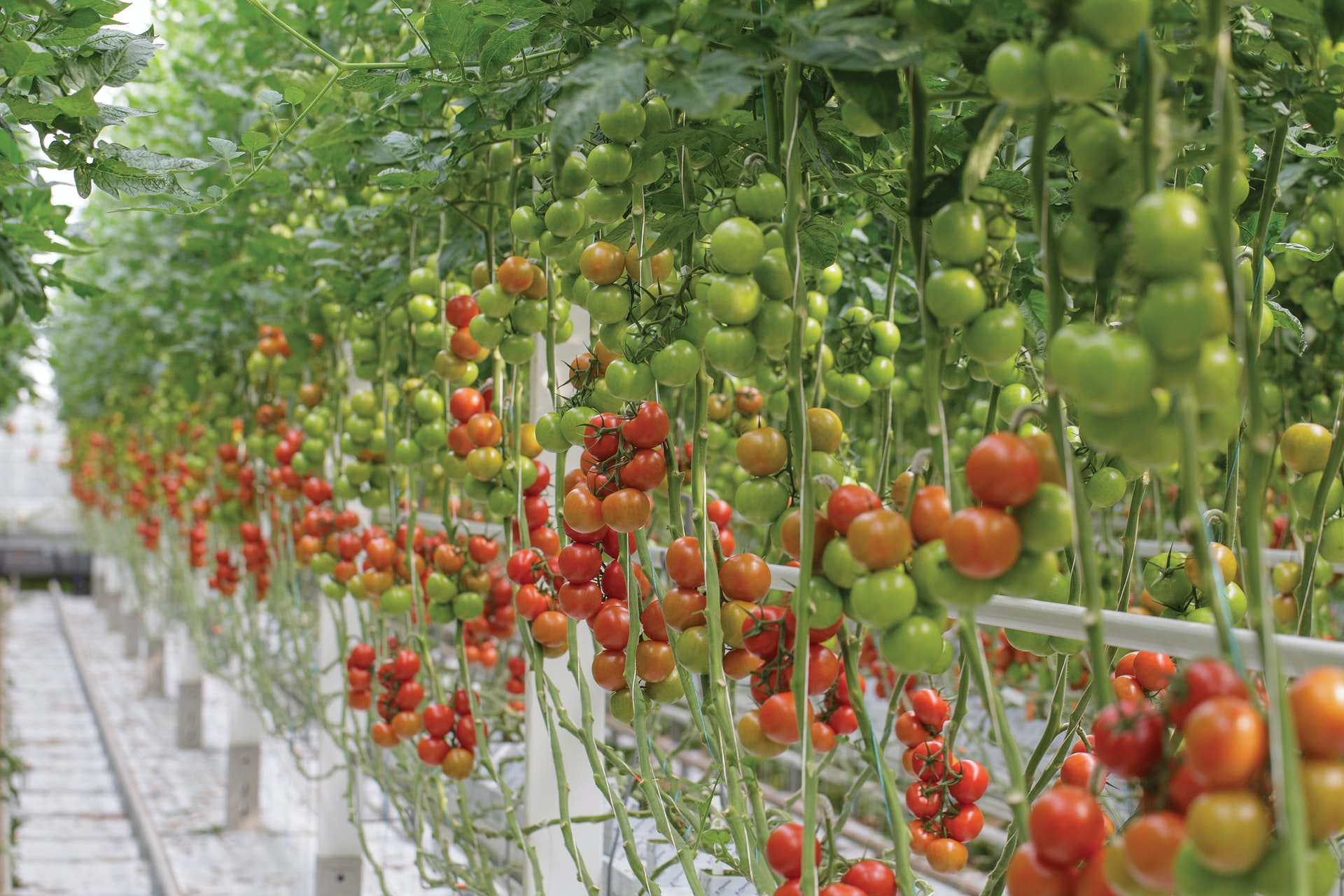Growing tomatoes in a protected environment is quite similar to growing them outdoors. However, protected spaces, due to the ability to control microclimatic conditions, allow for shifting the transplanting dates to times when it is not possible to do so outdoors because of excessively low soil and air temperatures.
Protected spaces include greenhouses and glasshouses. The characteristic of protected spaces is that they provide favorable microclimatic conditions for growing crops and maintaining these conditions consistently throughout the entire growing period, regardless of external atmospheric conditions. Maintaining consistent microclimatic conditions is achieved by heating (if a heating system is installed) or simply closing all openings of the protected space, depending on the external coldness level. Additionally, on hot days, ventilation and air circulation are possible. Planting occurs at a soil temperature of 18°C. The most favorable air temperature for the growth and development of tomatoes is 21 – 24°C, and when the temperature exceeds 27°C, ventilation is necessary. The nighttime temperature should be maintained at around 19°C, and it is desirable that the difference between daytime and nighttime temperatures be 4 – 5°C.
To have an overview of the microclimatic conditions and maintain them consistently, it is advisable to install climate stations in the protected spaces. These stations provide data on the current air temperature, relative humidity, intensity of sunlight, and CO2 concentration.
Factors Influencing the Choice of Protected Space:
- The planned size of the growing area.
- The types of plants to be grown (affecting the height of the greenhouse/greenhouse).
- Investment possibilities.
- Type of substrate.
- Duration of the growing season, with or without heating.
- Planned future development or expansion of the facility, among others.
Types of Protected Spaces:
Type A – Low Tunnel: Typically constructed as a DIY solution, without heating, used for seedling production and pre-season tomato growing. Simple construction without additional equipment. Not suitable for growing tomatoes.
Type B – High Tunnel or Greenhouse: Often used as a simple, cost-effective solution for smaller areas, usually for pre-season production, without heating. Ventilation is typically passive, achieved by opening doors and side panels. Suitable for growing tomatoes.
Type C – Typical Single-Span Greenhouse with a Circular Roof: Usually covered with PE film (polyethylene). Sometimes polycarbonate panels are used for vertical sides. It can also have a so-called Gothic roof, with an arch-shaped profile peaked in the middle, which is beneficial in snowy areas as snow slides off easily. Ventilation is provided through openings in the vertical sides, and fans can also be used. It is designed for the installation of heating systems, allowing for nearly year-round cultivation. Suitable for growing tomatoes.
Type D – Typical Structure Covered with Glass or Other Rigid Covering Materials: It can also be covered with film. It can be used for constant production throughout the year. Ventilation can be natural, artificial (using fans), or a combination of both. Suitable for the installation of all necessary systems.
Type E: Similar to Type C but consists of several interconnected single-span units, used for larger areas.
Type F: A structure consisting of several interconnected greenhouses (or glasshouses) of Type D. The units can either form a unified structure or be separated by a wall made of covering materials. This allows for different setups and cultivation practices in different seasons. For example, one section can be used for year-round production with appropriate heating, while another section can be used for pre-season cultivation. However, such setups require separate controls for each part. Roofs can have a central gutter with sloping symmetrical sides, or one side can be vertical while the other slopes.
Type G – Venlo Greenhouse: Named after the city in the Netherlands, Venlo. Unlike the previous types, it can have two central gutters per span. The roof panels can open by rotating around an axis at the bottom of the panel, potentially even achieving a vertical position, significantly improving natural ventilation.
Single-span greenhouses are intended for smaller areas, up to 400 m² (8 x 50 m), rarely up to 500 m². Larger dimensions would pose problems with the frame construction, covering installation, ventilation, and irrigation systems. For larger-scale tomato cultivation, multi-span greenhouses are used, which reduce losses and save space, construction, and covering materials. They also provide a cheaper and more reliable control and management system.













































